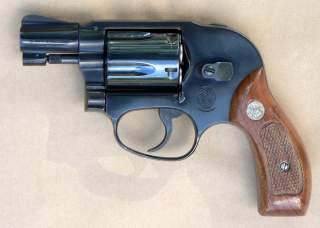The 5 Best .38 Special Handguns on the Planet (Ruger and Colt Made the Cut)
What would you pick?
The .38 Special is one of the most durable cartridges in history. Introduced in 1898 as the .38 Smith & Wesson Special, it was meant to upgrade the U.S. Army’s firepower. The Army’s .38 Long Colt cartridge proved mediocre at stopping Philippine insurgents in close-quarters combat—the .38 Special was one proposed remedy.
Although the Army eventually chose a different caliber (the .45 ACP), .38 Special eventually became one of the most popular cartridges in America. The .38 Special became popular with police in the Depression era, when a heavier round that could penetrate the car bodies of motorized bandits was needed. The round was soft-shooting and easy to train police recruits on. The round reigned supreme among law enforcement until the 1970s and 1980s, when 9mm high-capacity semi-automatic handguns became popular.
Today, the .38 Special is still popular, particularly among those who prefer the simplicity and aesthetic of revolvers. It is inexpensive and available in a wide variety of configurations, from regular ball ammo to hollow points to high pressure +P rounds. Here are five of the best guns you can shoot .38 Special out of.
Recommended: The Fatal Flaw That Could Take Down an F-22 or F-35.
Recommended: Smith & Wesson's .44 Magnum Revolver: Why You Should Fear the 'Dirty Harry' Gun.
Recommended: 5 Best Shotguns in the World (Winchester, Remington and Beretta Make the Cut).
Ruger SP101
Introduced in the early 1990s, the Ruger SP101 was the company’s dominant .38 Special–only platform for decades. The SP101 was similar to the larger GP100, but with a shorter barrel and more compact frame. The SP101 has a 2.25-inch barrel, slightly longer than many concealed carry barrels, and features a five-round cylinder. The revolver itself has a stainless steel frame with a satin finish. The SP101 was Ruger’s concealed carry handgun until the arrival in the mid-2000s of the Ruger LCR.
Colt Cobra
Colt’s Manufacturing Company, founded by Samuel Colt in 1855, was responsible for a great deal of the innovation in revolvers over the past three centuries. The company stepped back from double-action revolvers in the early twenty-first century but in 2017 relaunched its revolver line with the Colt Cobra. The Cobra uses the same name as an older line of Cobra revolvers; both are snub-nosed and meant for concealed carry. The stainless steel revolver features a two-inch barrel, adjustable sights, a Hogue rubber grip and is rated for powerful +P ammunition. Unlike many concealed carry revolvers—which hold five rounds—the Cobra has a six-round cylinder.
Smith & Wesson Model 10
Described as the “Glock of the (Postwar) Law Enforcement World,” the Model 10 was the most popular .38 Special revolver of its time. The revolver was originally known as the Smith & Wesson Model 38 Hand Ejector, but was renamed the Model 10 in 1957. It was one of the first revolvers with a cylinder that swung out when a latch on the frame was depressed. This made reloading much faster than using a traditional loading gate. The Model 10 was very popular with law enforcement agencies, and 500,000 were produced during World War II for Allied armies.
Smith & Wesson Model 442
Smith & Wesson assigns its revolver frames a letter designation depending on the physical size of the frame, the size of the user and the caliber used. The Model 442 is one of the company’s “J” frame guns, intended for concealed carry. The 442 has an overall length of just 6.3 inches and weighs 14.7 ounces unloaded—in large part to its aluminum alloy frame. Smith & Wesson still uses steel where it counts: the barrel is made of stainless steel and the cylinder of carbon steel. The 442 is “hammerless,” meaning the hammer is actually enclosed within the frame—so it can’t get caught on clothing in the midst of being drawn.
Smith & Wesson 686
The heavier, more powerful .357 Magnum cartridge is actually a descendant of the .38 Special round. As a result, .38 Special ammunition is readily usable in .357 Magnums, though .357 is not usable-—and does not physically fit—in .38 Special revolvers. One modern example of a .38 Special–capable revolver is the Model 686. The 686 is based off Smith & Wesson’s L (medium) revolver frame. The “L” frame accommodates a wide variety of hand sizes while still capable of handling the heavier recoil .357. The 686 is made of stainless steel, has a four inch-barrel and adjustable sights. Like the rest of the revolvers on this list it is also a double-action/single-action handgun.
Kyle Mizokami is a defense and national-security writer based in San Francisco who has appeared in the Diplomat, Foreign Policy, War is Boring and the Daily Beast. In 2009, he cofounded the defense and security blog Japan Security Watch. You can follow him on Twitter: @KyleMizokami.
Image: Wikimedia Commons

